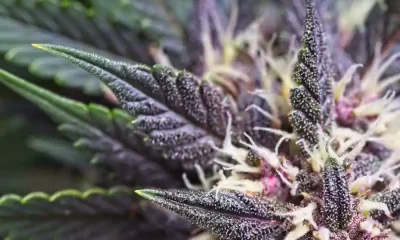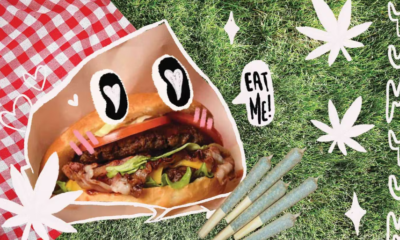Blogs
Why Does Weed Give You The Munchies?
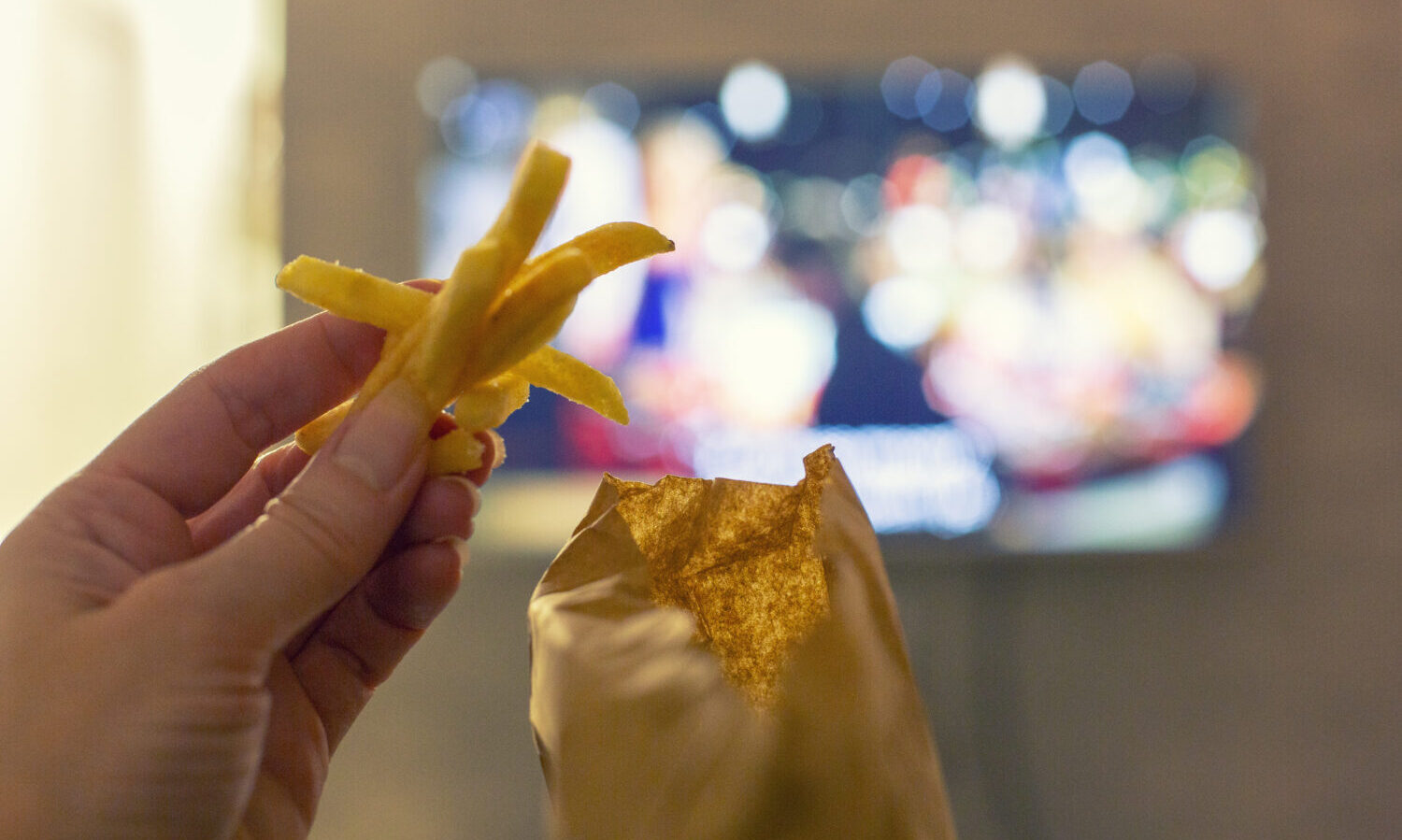
Cannabis produces its effects by binding to cannabinoid receptors in your body, and CB1 receptors are found in a variety of tissues involved in feeding and appetite control.
What comes to mind when you think of the word “munchies”? Maybe you think of cartons of ice cream, sleeves of cookies, or bags of chips. Maybe you picture a stoner feasting on junk food.
The munchies is defined as the intense hunger, particularly for sweet and savory treats, that strikes you after you use cannabis. While you may think of the munchies as an adverse side effect, many people use cannabis with the goal of stimulating their appetite.
What does it look like to use cannabis to stimulate your appetite? It could be a jet-lagged business executive who uses cannabis to get hungry for dinner despite his body telling him it is the middle of the night. Or a marathoner who takes a few drops of weed oil to stimulate her appetite after a grueling training session. Or a person battling cancer who uses medical marijuana to stimulate her appetite during chemotherapy.
Is cannabis the right choice to help you stimulate your appetite? Jointly can help you find out, but first let’s explore what it is known about cannabis and the munchies, and try to answer the question, “Why does weed make you hungry?”
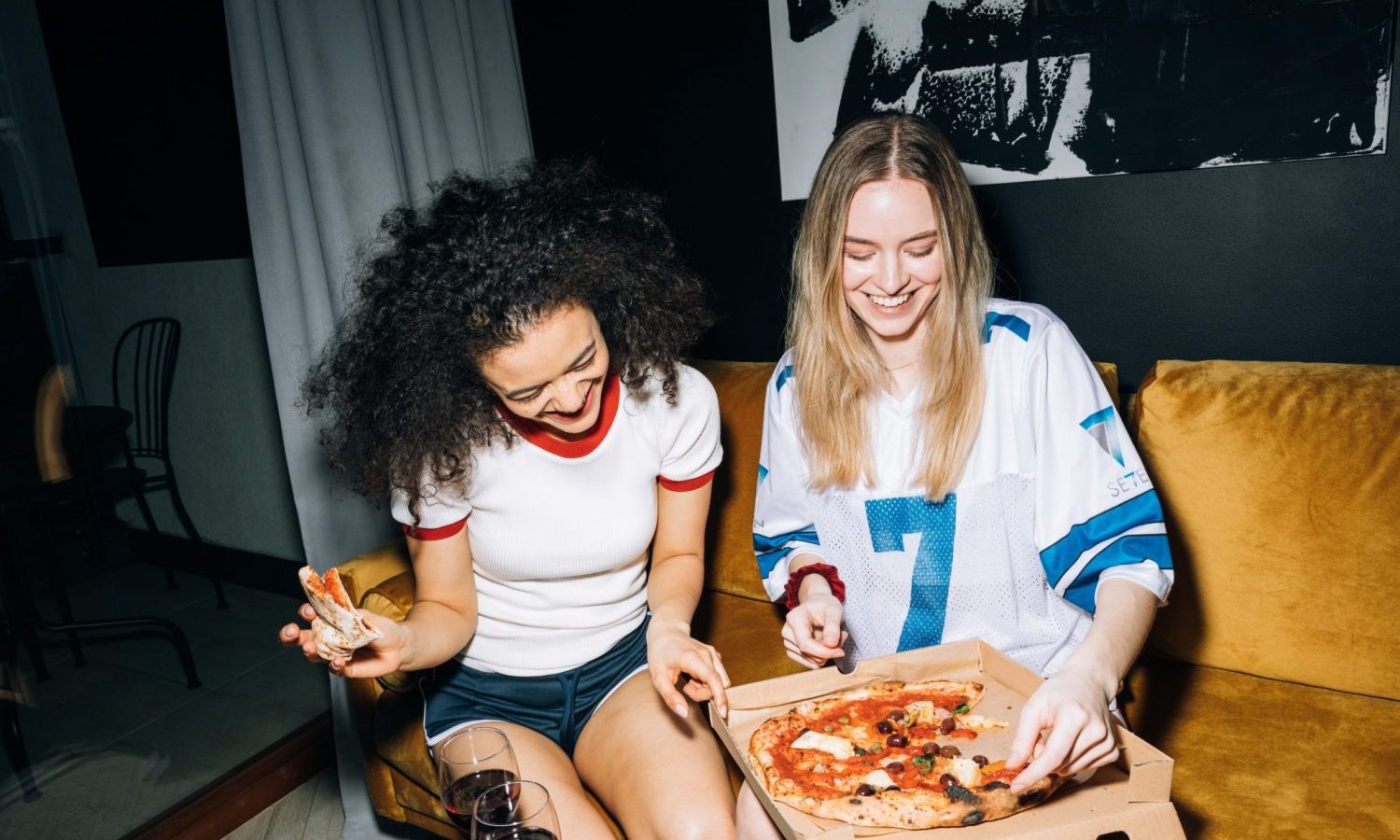
Does Weed Make You Hungry?
While people may have different results as to whether cannabis helps them relieve mild daily stress or whether cannabis improves their sleep, cannabis reliably stimulates appetite in animals with an endocannabinoid system. Weed is so consistent in causing the munchies that cannabis has been used as an appetite stimulant for thousands of years. The earliest record of using cannabis to treat appetite loss comes from 300 A.D. in India and this tradition continues in modern folk medicine traditions throughout Asia. For example, in Thailand “cannabis is frequently used to stimulate the appetite of sick people and make them sleep.” So, why does weed make you hungry?
Why Does Weed Give You the Munchies?
Weed gives you the munchies because of the way the endocannabinoid system (ECS) interacts with feeding behavior. The ECS is a “ubiquitous system that provides homeostatic balance to the nervous and immune systems, as well as many other organ systems.”
The ECS is composed of the endogenous ligands (AEA and 2-AG) also known as endocannabinoids (eCBs), their receptors (CB1 and CB2), and the enzymes that degrade and recycle the ligands. Ligands and receptors are like keys and locks. When the ligand binds to the receptor, it produces a signal in the cell. All animals except insects have an ECS. This reality indicates that the ECS “rose concurrently with the development of the nervous system as multicellular animals developed increasing complexity.”
The Hydra (H. vulgaris) is a type of small, fresh-water organism that was one of the first animals with a neural network. According to researchers who studied the Hydra’s ECS, the major function of this system “in this primitive organism was determined…to control its feeding response.” Evidently, the ECS plays an important role in controlling feeding behavior. Research has shown that when you stimulate the ECS in humans, rats, or worms with exogenous cannabinoids or eCBs, the animal will eat more food and prioritize palatable foods. In humans and rats, palatable food means sweet food. But why does weed make you hungry?
Why Does Weed Make You Hungry?
Your body normally feels hunger in response to certain stimuli: emptiness in the stomach and intestines, blood sugar levels, hormone levels, and signals from the hypothalamus. Cannabis produces its effects by binding to cannabinoid receptors in your body, and CB1 receptors are found in a variety of tissues involved in feeding and appetite control.
For example, CB1 receptors are distributed throughout your stomach and small intestine. These organs release ghrelin, the hunger hormone, based on signals from your hypothalamus. Ghrelin and leptin are two hormones that have been recognized to have a major effect on energy balance. Leptin suppresses the desire to eat, while ghrelin stimulates hunger and plays a role in “meal initiation.” Stimulating CB1 receptors in your GI tract can directly stimulate the release of ghrelin.
Fascinatingly, circulating levels of leptin and circulating levels of eCBs have an inverse relationship. Leptin suppresses appetite by acting on receptors in the hypothalamus. When circulating levels of eCBs are high, leptin is low. And after you have eat a large meal, leptin levels rise and eCB levels fall. Additionally, cannabis causes the munchies because THC binds to CB1 receptors in your hypothalamus, which stimulates the release of ghrelin and initiates various other appetite-stimulating processes. Satiety is partly modulated through special neurons (POMC neurons) in the hypothalamus.
Activating CB1 receptors inhibits these neurons, so they stop sending satiety signals to your brain, which leads to a change in hormone and peptide levels, which stimulates hunger and the desire to eat. Not only does cannabis stimulate many of the processes involved in feeding and appetite, it also enhances the pleasure from eating. THC binding to CB1 receptors in the basal ganglia of your brain “may enhance eating pleasure,” and THC binding to CB1 receptors in the limbic forebrain may make food taste better. That is part of the answer to the question, “why does weed make you hungry?” Now let’s explore some other elements of the munchies.
fast food munchies
Photo by Ziga Plahutar/Getty Images
Why Does Food Taste Better High?
Essentially, cannabis hijacks the pathways that your body uses to regulate your appetite and sends the signal that you are starving. Have you ever heard the phrase, “hunger is the best seasoning”? This phrase exists because hunger makes things smell and taste better; hunger “arouses sensory perception.” Until recently, scientists did not understand how hunger made food taste better, but recent studies in mice indicate that it has to do with the ECS. The ECS is known to play a role in sensory processing, including smell and taste, as well as regulation of mood, stress, and emotion.
In mice, THC binds to receptors in the olfactory bulb, “significantly increasing the animals’ ability to smell food and leading them to eat more of it.” Mice genetically engineered to lack cannabinoid receptors in their olfactory bulbs “did not demonstrate an increased appetite when given [cannabis], showing that the ‘munchies’ effect was dependent on olfactory bulb activity as well.” Fascinatingly, when the researchers deprived the mice of food for 24 hours, their natural eCB levels increased, which in turn increased their food intake as well as their sensitivity to smell. So, it seems like part of the answer to the question, “Why does weed make you hungry?” is that the ECS plays an integral role in getting an organism to start and continue eating.
Endocannabinoids, Appetite, and Reward
When we haven’t eaten for some time, eCB levels rise, which enhances our taste and smell. Why is this process evolutionarily advantageous? If we can answer this question, we might have fleshed out the answer to our original question: “Why does weed make you hungry?” The flavors in our food tell our brains about what we are eating. Salty, sweet, and umami flavors “have an evolutionary role in nutrition as a selective source of calories, proteins, and minerals; whereas bitter and sour tastes are involved in the avoidance of harmful and/or spoiled foods.”
Endocannabinoids have been shown to enhance “sweet taste sensitivity” in both humans and rats. Scientists hypothesize that cannabinoids “might act in the brain to increase hedonic impact or palatability of the taste of foods.” When feeding is driven by reward rather than internal signals related to hunger, it is called hedonic feeding.
In short, homeostatic feeding stops when an animal is sated, while hedonic feeding continues. Hedonic feeding makes evolutionary sense, but often adversely affects us in the modern world as it can lead to metabolic disorder. But in prehistory, humans rarely encountered sweet food sources. And when they did, they wanted to eat as much of it as possible. Sweet foods were typically seasonal and energy dense, so it was advantageous to keep eating long after you were full. People who ate more of that food at once and stored that energy as body fat were more likely to be successful.
Scientists have found that injecting eCBs into rats and exposing them to sweet taste significantly increases the activity of the nerve that innervates the anterior tongue. These findings show that “cannabinoids increase behavioral response” to sweet taste. CB1 knockout mice did not have this effect, demonstrating that this increased sensitivity to sweet flavor is related to eCBs interacting with the CB1 receptor. Let’s put this information together. Scientists have observed that starvation increases the levels of circulating endocannabinoids, which increases sensitivity to sweet taste.
Additionally, stimulating CB1 receptors “promotes the storage of energy in adipose tissue.” That means that when you have not eaten and you have higher levels of circulating eCBs stimulating your CB1 receptors, your body is primed to store energy as fat. Food deprivation leads to a rise in eCBs, which creates a situation where an animal is increasingly sensitive to and rewarded by sweet, energy dense foods. If the animal finds a source of sweet food, it will eat it and experience increased pleasure, and eat far past the point of being full (hedonic eating).
Additionally, this process will tell the body to store this excess energy as fat. These interrelated processes illuminate how important the ECS is in maintaining homeostasis in feeding and metabolism, and hopefully answer the question, “why does weed make you hungry?”
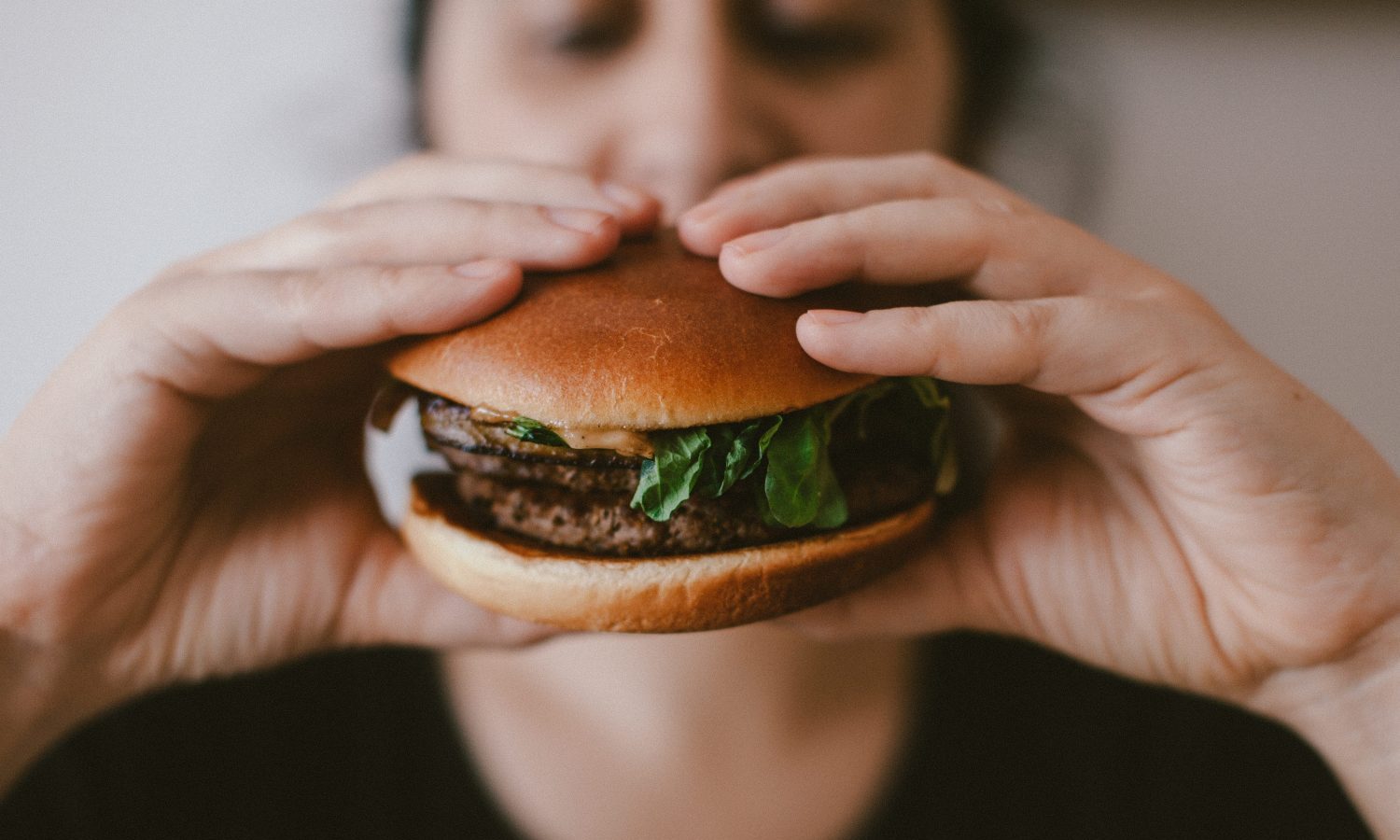
Does Smoking Weed Make You Lose Weight?
We have answered our original question, “why does weed make you hungry?” But in answering this question, we encounter new ones. For example, if the ECS plays such an important role in regulating eating and metabolism, does weed affects your metabolism? Does weed make you lose weight? Does weed make you skinny? Does weed speed up your metabolism?
There is some evidence that chronic cannabis use may affect weight and metabolism. Cannabinoid receptors are expressed in the brain as well as the gut and other peripheral organs involved in “food intake, metabolism and energy homeostasis.” As we have discussed, stimulating CB1 receptors, “by either endocannabinoids or exogenous cannabinoids, acutely stimulates food craving, intake and reward, and promotes the storage of energy in adipose tissue.” However, chronic “daily administration of THC suppressed weight gain [and] fat mass gain” in rats.
Epidemiological studies in humans indicate a relationship between long term chronic cannabis use and “decreased prevalence of obesity and diabetes.” More research is needed to understand why cannabis products opposite effects when administered acutely versus chronically. At present, there is no evidence that weed will help you lose weight. However, because of the complex role that the ECS plays in metabolism and weight maintenance, researchers are exploring new obesity drugs that target the ECS.
Does CBD Give You the Munchies?
Unlike THC, CBD is a non-intoxicating cannabinoid produced by the cannabis plant. To learn all about CBD, check out our article What is CBD and What Does it Feel Like? CBD interacts with the ECS in a different way than THC does. While THC agonizes or binds to CB1 receptors, CBD produces a nearly opposite effect. CBD is a partial antagonist of CB1 receptors, making it more difficult for THC (or endocannabinoids that bind to this same receptor) to bind and produce psychoactive effects. As a result, CBD produces the opposite effect of THC and mildly suppresses the appetite. CBD may also create this appetite suppressing effect by affecting processes in the gut.
Do Edibles Give You the Munchies?
Now that we have explored the question, “Why does weed make you hungry?” you probably know the answer to this question. Edibles give you the munchies. Any ingestion method that gets you high on THC will give you the munchies. For example, THC has very low absorption rates through the skin, so using a topical THC product may not give you the munchies. However, taking cannabis oil sublingually, eating an edible, or inhaling cannabis vapor will stimulate your appetite. If you eat a weed brownie and suddenly find that you crave edibles, you are probably experiencing the munchies. Experts recommend against eating edibles when experiencing the munchies, as you may experience a THC overdose.
What is the Best Weed Strain for Munchies?
Is there any scientific basis for why one cannabis strain might stimulate appetite better than another? For example, does sativa make you hungry? Is the terpene myrcene an appetite stimulant? What is the best weed strain for the munchies? The primary appetite stimulating effects of cannabis come from the effect of THC on CB1 receptors. While there likely are secondary and complementary effects from terpenes or other lesser-known cannabinoids, there is not yet enough research to state anything definitively. However, it is possible that some strains will stimulate appetite better than others.
The best way to find out which weed strains give you the munchies is to try different cannabis strains from different brands, record your use on the Jointly app, and track how each strain or product made you feel. For help choosing the best weed strain, check out our article Why Jointly is Better than a Strain Finder. In that article, you will learn what strain names really mean, how to find the best appetite stimulating weed strains, and how to use Jointly to discover the most effective products in your area.

How to Not Get the Munchies
So, cannabis reliably stimulates the appetite in animals with an endocannabinoid system. But maybe you are reading this article to discover how to not get the munchies. Or maybe you want to find out how to stop the munchies once they have started. But is it possible to avoid the munchies entirely?
If you want to avoid the munchies, try eating a substantial meal before you ingest cannabis. By filling your stomach up, you will send the strongest signals to your body that you just ate. Perhaps you will find the best results with controlling the munchies if you pair cannabis with a weed companion food like black tea or green tea, which has other compounds that may suppress your appetite.
Additionally, you could consume CBD with THC so that the appetite stimulating effect of THC is balanced by the appetite suppressing effect of CBD.
Lastly, you could try to drink lots of water. Staying hydrated and full of water may help send a signal to your body that your stomach is full, which may help suppress the munchies-inducing effects of cannabis. Of course, the most effective way to stop the munchies is to build up a tolerance to the appetite stimulating effects of cannabis. Many of us have a friend who notes, “I don’t get the munchies anymore.” Likely, this individual is a regular cannabis user who has built up some degree of tolerance to the appetite stimulating effects of weed.
Is Weed Good for Getting Hungry?
As we have discussed, cannabis is one of the most effective ways to naturally stimulate your appetite. If you want to use cannabis to stimulate your appetite, use the Jointly app to track and optimize the 15 factors that can impact your experience. These 15 factors include your dose, the environment in which you consume cannabis, who you are with when you ingest cannabis, how hydrated you are, the quality of your diet, how much sleep you got last night, and more. Jointly is a new cannabis wellness app that teaches you how to achieve your wellness goals with cannabis and CBD. Perhaps you will discover that you experience the most appetite stimulation with cannabis when you smoke weed after exercising.
Our data indicates that Jointly works best when you report at least 10 cannabis sessions. If you only fill out a few reports and then stop, you won’t have enough data to start to see trends and improve how you consume cannabis. When you use Jointly, you are rating how well a product helped you achieve your wellness goals. Over time, your average ratings should go up as you optimize how you consume cannabis and CBD. Use the Results Tracker feature to make sure your results are improving over time.
How to Find Weed Products for Appetite Stimulation
Unlike other wellness goals, appetite stimulation is such a reliable and consistent effect of cannabis that every THC product is likely to produce this effect to some extent. We expect to see more products designed specifically for this wellness goal in the future, but for now you can filter your Product Finder results to show you the highest rated cannabis products for the goal Stimulate Appetite. Jointly’s Product Finder feature allows you to look up legal, licensed cannabis and CBD products in your state based on your wellness goals. Select Stimulate Appetite and see how other users like you rated a product on a scale from 1-10, based on how well it helped them stimulate their appetite. By reporting your cannabis and CBD consumption, you are contributing important data to the Jointly community and helping Jointly make better product and routine recommendations for you. Download the Jointly app on the App Store or the Google Play Store to get started on your cannabis wellness journey.
Source: https://thefreshtoast.com/cannabis/why-does-weed-give-you-the-munchies/
Blogs
Border sales a boost for most marijuana retailers across US

Marijuana sales along state lines are key revenue generators for retail operators in the United States, and new insights suggest a similar business bump along international borders, particularly Mexico.
Data compiled by New York-based wholesale technology platform LeafLink – as well as information gathered from state agencies, quarterly reports and interviews with several cannabis companies – bear that out.
LeafLink analyzed hundreds of ZIP codes at the request of MJBizDaily and found strong links that when new recreational markets open, retailers near borders stock up on inventory significantly more than operators located elsewhere in a state.
Data from the past three years revealed wholesale marijuana products purchased by border stores jumped 140% after the launch of adult-use sales, while retailers located in more interior areas increased purchases by about 80%.
“The growth when a state launches adult-use sales at a border store in terms of purchasing activity is around double the growth of the remainder of the state,” LeafLink Strategy Analyst Ben Burstein told MJBizDaily.
Of course, numerous factors are at play – perhaps none more impactful than the marijuana policies of neighboring states.
That’s why Illinois retailers near Wisconsin, where marijuana possession is illegal, are still attracting Wisconsinites nearly four years after the launch of recreational sales.
There also are retail sales-tax implications, a big reason why St. Louis-areas operators are seeing an influx of shoppers from southern Illinois, where cannabis taxes are at least three times higher than in Missouri.
Meanwhile, border retail in New Mexico is boosting depressed economies along hundreds of miles of its shared borders, drawing stampedes of consumers from neighboring Texas and, more recently, cross-border buyers from Mexico.
Retail shakeup in the heartland
The February launch of adult-use sales in Missouri has caused ripple effects throughout the Midwest.
Missouri holds the rare distinction of bordering eight states, with only Illinois offering recreational marijuana sales.
Missouri’s 6% retail tax on recreational marijuana purchases is also among the lowest in the nation, drawing Illinois consumers across the Mississippi River in droves to buy much cheaper weed.
All in, cannabis sales taxes in neighboring Illinois eclipse 30%, second only to Washington state. And in Chicago, sales taxes can easily top 40%.
Demand is booming in western Missouri, too.
In April, Missouri retailers near the border of Kansas, where marijuana possession is also illegal, told MJBizDaily they were seeing foot traffic increase ninefold after expanding into recreational sales.
The rush of new customers, coupled with cultivation-capacity lags, has led to big spikes in wholesale flower prices and inventory shortages throughout the supply chain.
Retailers, for their part, are trying to keep pace.
To meet consumer demand, wholesale purchases per store in the Kansas City, Missouri, market increased from $97,000 in the quarter before the launch of recreational sales to $491,000 in the quarter after, a whopping 406% jump, according to LeafLink data.
In the St. Louis market, which borders southwestern Illinois, wholesale purchases per store increased nearly 57%, to $610,000, after adult-use sales began.
“The demand’s been bigger than anyone expected,” Burstein said.
A zero-sum game
In marijuana retail, particularly near state borders, it’s a zero-sum game.
The sales boom in the St. Louis market, which has more than 70 stores, has deflated business on the Illinois side of the border, where retailers have lost millions of dollars in sales since Missouri’s adult-use launch, according to quarterly reports and earnings calls.
Top executives at New York-based multistate operator Ascend Wellness Holdings, which has two shops near the Missouri border, cited revenue declines at its southern Illinois stores in recent earnings, saying it has led to suppressed margins that are expected to linger for much of the year.
Florida-based MSO Jushi Holdings, which also operates two Illinois stores near the Missouri border, reported an 8.8% year-over-year revenue decline to $66.4 million in its second quarter, partially attributing the slide to adult-use sales in Missouri.
In an Aug. 11 second-quarter earnings call, Jushi CEO James Cacioppo said total Illinois sales declined 20% from the first quarter and 40% year-over-year.
“I think we under-anticipated the pricing power initially out of the gate that retailers were going to have in Missouri,” Jushi Chief Strategy Director Trent Woloveck told MJBizDaily in an interview.
“The impact was a little bit greater than then we had thought due to that pricing for flower, vapes and infused products.”
In response, Jushi has implemented several initiatives, including adding new promotions and diversifying product SKUs (stock-keeping units) to ease the impact of declines sales in Illinois.
Northern exposure
Market dynamics in northern Illinois, particularly along the Wisconsin border, are a different story.
Wisconsin is among 10 states without a medical or recreational marijuana program.
Illinois counties bordering Wisconsin – including Lake, McHenry, Jo Daviess and Winnebago – accounted for 15.4%, or $239.7 million, of the nearly $1.6 billion in cannabis sales last year in the state, according to a fiscal analysis requested by pro marijuana-legalization lawmakers in Wisconsin.
The Wisconsin Legislative Fiscal Bureau report, which was released in March, cited annual statistics from the Illinois Department of Financial and Professional Regulation.
Moreover, the report estimated about 7.8% of marijuana sales in Illinois in 2022, roughly $36.1 million, were generated by out-of-state residents traveling from Wisconsin.
Under Illinois law, out-of-state residents can only purchase recreational cannabis.
Two of Chicago-based multistate operator Cresco Labs’ 10 stores in Illinois are located near the Wisconsin border: a Sunnyside outlet in South Beloit at the border and one in Rockford, about a 30-minute drive away.
The South Beloit store often draws up to 1,000 daily visitors, according to Cresco’s national retail president, Cory Rothschild – traffic on par with the nation’s busiest marijuana retailers in highly populated areas.
It’s all the more impressive, considering that South Beloit has a population of roughly 8,000 and is more than 40 miles from Madison, the nearest city and Wisconsin’s state capital.
“It’s an extremely high-volume retail location,” Rothschild told MJBizDaily.
“South Beloit and Rockford as well are probably (among the) top dispensaries in the country.”
Maryland
Maryland is the newest recreational cannabis market, with nearly 100 medical marijuana dispensaries having converted to adult-use retail in late June.
While LeafLink wholesale data suggests about a 10% increase in wholesale product purchases statewide after the launch of adult-use sales, some retailers along Maryland’s south and eastern borders are doubling orders to meet demand.
In Elkton, near the Delaware border, stores are ordering about $41,000 in wholesale products per month, up 115% since the launch of recreational sales on July 1.
In the Rockville/Germantown area – outside of Washington DC and near the Virginia and West Virginia borders – monthly wholesale purchases have increased about 42%, to $54,000 per store, since recreational sales began.
Though MMJ dispensaries opened in West Virginia in 2021, the state still has some of the harshest marijuana laws in the country, according to the Marijuana Policy Project.
Meanwhile, Virginia’s adult-use rollout has been put on ice by Republican Gov. Glenn Youngkin.
MSO MariMed’s wholesale business serving retailers in Maryland has benefited from increased demand from neighboring states, according to Jeff Jones, director of operations.
“We have retail customers that are very close to Virginia, Pennsylvania and West Virginia, and I’m sure that’s driving a significant amount of their business,” he said.
The Massachusetts-based company supplies every retailer in the state with its product brands.
MariMed is planning to double its cultivation and canopy space in Maryland, with product from that expansion expected to hit the wholesale and retail markets in the first quarter of 2024, Jones said.
Its retail operation in Annapolis – the state capital is about a 45-minute drive from Pennsylvania or West Virginia – hasn’t experienced the same type of uptick from border business but is still performing well, according to Jones.
A tale of two borders
The small town of Sunland Park, New Mexico, has racked up outsized sales since the state launched recreational retail in April 2022.
The sparsely populated bedroom community is situated across the border from El Paso, Texas, and Jaurez, Mexico, which have a combined population of more than 2.2 million.
That purchasing power has helped Sunland Park’s 88063 ZIP code top the state for per-capita adult-use spending, a sales metric that divides dollars spent for cannabis by population.
Per-person recreational marijuana spending in Sunland Park was $1,044, according to an MJBizDaily analysis of data from the New Mexico Regulation and Licensing Department.
Its 88063 ZIP code also houses two of New Mexico’s leading cannabis stores.
Ultra Health and Everest Cannabis Co. generated nearly $6.1 million in combined sales from August 2022 to February 2023, according to MJBizDaily research.
Because business has been so strong at that Sunland Park store, Ultra Health last summer opened an adjacent location that handles only online orders for pickups.
The majority of its 42 stores were strategically aligned to capture business along New Mexico’s more than 600-mile border with Texas, the second-most-populated state.
“I would say half our business is Texas-related,” Ultra Health CEO Duke Rodriguez told MJBizDaily.
As part of that strategy, the company is planning to open an outlet in Lordsburg with hopes of drawing customers from Mexico, Texas and Arizona.
Mexico border towns share more than commerce, including family, culture and language.
Some residents own commercial properties and homes on either side of the border.
And residents tend to travel freely between Juarez, El Paso and Sunland Park to shop, dine and visit friends and family, according to Rodriguez.
Many also buy regulated marijuana, which might come as a surprise to some industry watchers, especially those unfamiliar with border business in the Southwest.
Though transporting licensed cannabis across the U.S.-Mexico border is barred under federal law, it’s fairly common, industry insiders tell MJBizDaily.
“The product is intended to be consumed within the state of New Mexico and should not cross state or international boundaries,” Ultra Health’s Rodriguez advised.
“The reality is some consumers cross these boundaries intentionally or by not being fully aware of the risk and prohibition.”
Sales in other border communities, such as Clovis and Hobbs – where Ultra Health also has stores – are also outpacing the field, another sign that Texans, and some Mexicans, are crossing the border to purchase marijuana from New Mexico marijuana retailers.
Source: https://mjbizdaily.com/border-sales-a-boost-for-most-cannabis-retailers-across-us/
Blogs
Cannabis Art Is Flourishing On Etsy

Although there is an available and thriving market for cannabis art, most e-commerce websites and platforms prohibit artists from selling art that depicts cannabis.
Is there any section or industry without cannabis influence? It’s starting to look like there isn’t any, as, throughout history, cannabis users have displayed their creative capabilities in various ways. And now cannabis art is flourishing on Etsy
Cannabis users and enthusiasts are some of the most innovative people you’ll ever meet, and their inspiring works of art have been admired for decades. Most of the works created by cannabis enthusiasts have also sparked debate for centuries, dating William Shakespeare’s times.
Cannabis and the creative arts
Research has shown a fantastic connection between cannabis and creativity, an intriguing relationship that is attributed to the plant’s remarkable properties. Cannabis interacts with the human brain through the endocannabinoid system and receptors in the brain.
Extensive works of research show that creative prowess and imagination heighten when users consume cannabis, thus enabling divergent and distinct thought patterns. Hence the reason great men and women like Maya Angelou and Louis Armstrong celebrated the impact of cannabis on their creative careers.A more significant percentage of the creative industry is also full of trailblazers who have affirmed that cannabis is a significant influence on their success. For such artists, marijuana inspires the way they hone their crafts and showcase their ideas.
Despite such a show of artistic brilliance, some artists struggle with finding a place to showcase their works. Why is this the case? Why can’t artist showcase their cannabis-inspired art?
The problem with finding a market showcase
Although there is an available and thriving market for cannabis art, most e-commerce websites and platforms prohibit artists from selling art that depicts cannabis. Some of these merchant shops also flag items such as CBD paraphernalia and insist that such things cannot be sold.
With such restrictions, creative artists fail to get an adequate space to share their creations with the world. Artists feel shut out of the market space, and then COVID-19 happened.
The Coronavirus Pandemic made everything worse for cannabis artists and businesses to maintain operations, which created a disturbing gap in the market.
The Solution: A cannabis-themed marketplace
As the challenge became increasingly worse, two outspoken cannabis advocates co-founded an online marketplace called The Artsy Leaf. Space was set-up as a multi-vendor marketplace to make it possible for artists to display their works.
The co-founders Abbey Weintraub Sklar and Rebecca Goldberg discovered that there were many international craftsmen, women, and artists with products that weren’t shared on any platform. The artists’ products are unique cannabis-friendly items that were mostly scattered on censored tech platforms that limited their exposure to the world.
Goldberg and Skylar understood the importance of an online vendor marketplace created for creators and buyers in the cannabis industry. COVID-19 and its resultant impact was also the inspiration behind an online space.
Initially, it was supposed to be an in-person CBD marketplace, but the pandemic made physical meetings impossible for buying and selling purposes. Hence the reason the co-founders made it an online space with a highly functional website.
The Artsy Leaf
The Artsy Leaf marketplace replaces other online platforms that were too restrictive for those in the cannabis industry. Some of those unfriendly sites didn’t provide room for tagging, describing, and listing CBD products, making it difficult for artists to advertise their products.
But with the Artsy Leaf marketplace, vendors and small business owners have maximum freedom to advertise their cannabis items. The platform also incorporates advertising with SEO consulting and doesn’t hide its processing fees.
The co-founders maintain that their desire to help all cannabis vendors succeed drives the marketplace. The website launched with an initial 14 vendors, and with its viable operational approach, more vendors are expected to join this revolutionary idea.
A virtual cannabis marketplace is what the world needs right now to bridge the gap between artists and buyers. Cannabis-inspired pieces will always remain relevant globally because of how unique and disruptive they can be. The Artsy Leaf is the right incubation place for ideas, purchases, and value exchange.
The future of the online marketplace
The future of the online cannabis marketplace for artists looks promising, and why is this so important? Well, cannabis is gaining a lot of momentum in America, with more states legalizing marijuana more people will gain access to weed, and when they do, they may be inspired to create unique art pieces or be looking to purchase unique cannabis inspired works.
Either way, the cannabis world needs an outlet for artists to share their works, and this is where platforms like the Artsy Leaf become crucial. Other online platforms may start to look into adjusting their policies regarding this issue because this sector is about to explode.
It is time to change the current status quo on the other E-commerce sites not allowing cannabis artists to showcase their genius.
Bottom line
The world is awakening to the ever-increasing potentials of cannabis. Through marketplaces like the Artsy Leaf, cannabis artists and art lovers can meet, interact and sustain the cannabis industry.
Without platforms like these, cannabis-inspired art will gradually decline, and that isn’t good for the cannabis industry at all. We must all continue to encourage the establishments of platforms (online and offline) where artists can thrive. Budding cannabis artists need more places to express themselves, and the Artsy Leaf is a suitable platform.
If you are a cannabis-themed artist, an aspiring one, or a small business owner and you struggle with promoting your work, you can visit The Artsy Leaf.
Source: https://thefreshtoast.com/cannabusiness/cannabis-art-is-flourishing-on-etsy/
Blogs
Beer Lingo, A Guide To Becoming A Better Patron

Bars are wondrous places full of beer, chatter, celebration, ways to get drunk and opportunities to meet friends. But they are also tricky. As with most niche scenes, there is lingo you need to know, terms you should memorize and slang with which you should show facility. What’s Imperial mean? How do you pronounce “weisse?” And how much should I tip my bartender? Hang on, because you’re about to find out the answers to all of these. Here is your beer lingo, a guide to becoming a better patron. BTW, the Slavic word ‘beer’ came from the verb ‘to drink’. Initially, beer was any kind of drink.
Hops
https://giphy.com/embed/3oEduIpVOVcupPXcFG
via GIPHY
Small green pine cone-like buds that grow on vines. Their oils and acids preserve and flavor beer.
Hoppy
The thing snobby people refer to about beer, and what people who hardly ever drink beer say they don’t like. Hoppy is often used as a synonym for the word ‘bitter,’ but there are plenty of beers that use loads of hops and don’t taste the least bit bitter.
Malt
https://giphy.com/embed/3orieWw0snNJFCNxNC
via GIPHY
The sugars used to sweeten beer.
Malty
https://giphy.com/embed/2yxsvbwxQ4TUk
via GIPHY
That syrupy, sweet flavor in beer drunk by amateurs.
Perry
https://giphy.com/embed/d4bm8acp2cuHpLFK
via GIPHY
A cider-like drink made exclusively with pears.
Imperial
https://giphy.com/embed/3o7TKGVVeQK1j0fbe8
via GIPHY
A word out in front of certain beer styles (Stout, IPA) meaning they’re much stronger.
Mead
https://giphy.com/embed/yIXVnzpoNiE0w
via GIPHY
Beer produced from honey, water and yeast.
Ale
https://giphy.com/embed/lAayRqqtfuqju
via GIPHY
Ale is brewed using a warm fermentation method, resulting in a sweet, full-bodied and fruity taste. It is a maltier, top-fermented beer.
Lager
https://giphy.com/embed/dM34XK49ulmDu
via GIPHY
A beer that is effervescent and light in color and body. it is a dry, bottom-fermented drink.
IPA
Stands for India Pale Ale because it was originally brewed in the United Kingdom and shipped to British soldiers in India during colonization (which is still basically happening). It is made with more hops, to give it a stronger flavor. There’s no standardised threshold at which a pale ale becomes an IPA, though.
Cask-Conditioned
https://giphy.com/embed/dg3i5NvtNCr8A
via GIPHY
The process in which a draught beer retains yeast to enable a secondary fermentation to take place in a cask in the pub cellar. Cask conditioned beer is the traditional drink of the British pub, and served properly, it can be among the most subtle and beguiling of beer types.
Fresh Hop
https://giphy.com/embed/3oEdv8lx4icZfRYEPS
via GIPHY
Beer made with recently picked hops that haven’t been dried. It provides distinctively grassy, plant-like, and “green” flavor profiles without the bitterness associated with IPAs and other beers featuring copious dried hops.
Weisse
https://giphy.com/embed/qgqaIJrAgqawE
via GIPHY
Pronounced ‘Vice’ is the counterpart in German for “white,” most commonly used in reference to the sour Berliner type of beer, but also sometimes to the Bavarian type, as in weissbier. Weizen is the German word for “wheat,” most often applied to the Bavarian wheat beer style.
Microbrew
https://giphy.com/embed/l0MYtSjYO26kguz1C
via GIPHY
Compared to macrobreweries, which produce millions of barrels per year, microbreweries produce a relatively small amount of beer—between 1,000 to no more than 15,000 barrels annually. But aside from their size, what makes microbreweries special is that they’re known for brewing specialty beers.
The type of beer you do not use for beer pong unless you make more money than your bartender.
Pint
https://giphy.com/embed/DGWAx8d3IkICs
via GIPHY
The size of glass most beers are served in, and also the thing you dropped and smashed when you were trying to text your Uber driver.
Dive Bar
The kind of bar you actually really like going to, unless you’re trying to impress a date or a friend. It is typically a small, unglamorous, eclectic, old-style drinking establishment with inexpensive yet strong drinks; it may feature dim lighting, shabby or dated decor, neon beer signs, packaged beer sales, cash-only service, and local clientele
BTW, the strongest beer in the world has a strength of 67.5%. It was created in 2017 by the Scottish brewery Brewmeister. The beer is called Snake Venom
Pickup Line
https://giphy.com/embed/EU1obAC38GuWI
via GIPHY
The thing you should never say because it never works.
Tip
https://giphy.com/embed/kfGijLoNvBQ08
via GIPHY
The amount of money you give a bartender after a transaction, which should be more than you initially think to give because A) most bartenders are relatively poor and deserve dough, and B) if you tip a lot you’ll be remembered C) if you tip too little you’ll be remembered D )
How do you want to be remembered?
Patron
https://giphy.com/embed/3oz8xTawWVM7Npb1FS
via GIPHY
Someone who loves the bar they go to, not just someone who is there a lot. If you’re unclear on the distinction, you’ve never loved before.
Bar Napkin
https://giphy.com/embed/xT5LMO10TEI5k1gQAE
via GIPHY
Where much great poetry started.
The Bar
https://giphy.com/embed/PvZ2jLjFofH4Q
via GIPHY
Don’t touch anything behind it.
Hope you enjoyed our beer lingo, a guide to becoming a better patron.
Source: https://thefreshtoast.com/drink/beer-vocab-101-guide-becoming-better-patron/
-

 Business2 years ago
Business2 years agoPot Odor Does Not Justify Probable Cause for Vehicle Searches, Minnesota Court Affirms
-

 Business2 years ago
Business2 years agoNew Mexico cannabis operator fined, loses license for alleged BioTrack fraud
-

 Business2 years ago
Business2 years agoAlabama to make another attempt Dec. 1 to award medical cannabis licenses
-

 Business2 years ago
Business2 years agoWashington State Pays Out $9.4 Million in Refunds Relating to Drug Convictions
-

 Business2 years ago
Business2 years agoMarijuana companies suing US attorney general in federal prohibition challenge
-

 Business2 years ago
Business2 years agoLegal Marijuana Handed A Nothing Burger From NY State
-

 Business2 years ago
Business2 years agoCan Cannabis Help Seasonal Depression
-

 Blogs2 years ago
Blogs2 years agoCannabis Art Is Flourishing On Etsy




